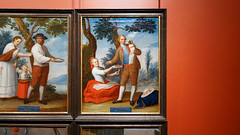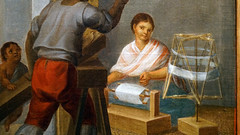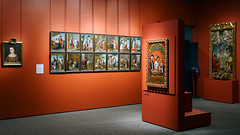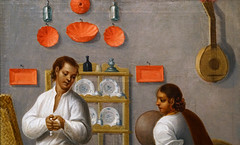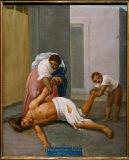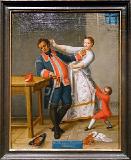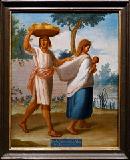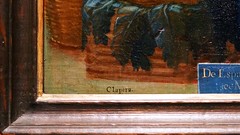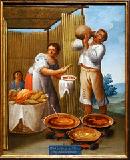2.3.9.2: Francisco Clapera, set of sixteen casta paintings
- Page ID
- 179606
Video \(\PageIndex{1}\): Francisco Clapera, Set of Sixteen Casta paintings, c. 1775, 51.1 x 39.6 cm (Denver Art Museum). Speakers: Sabina Kull, Meyer Center Fellow, Denver Art Museum and Beth Harris.
Key points
- New Spain was a viceroyalty of the Spanish empire. The presence of people of many different ethnic backgrounds and their relative social mobility in New Spain prompted Spanish anxiety about racial mixing and a desire to maintain social hierarchies that privileged European lineage.
- Casta paintings used labels and visual details such as different skin tones, dress, occupations, and settings to distinguish ethnicity and to signal economic and class divisions. These images did not reflect reality so much as represent stereotypes arranged along a biased, hierarchical scale.
- Francisco Clapera was involved in the founding of an art academy in New Spain. It is likely that many casta paintings were produced for export back to Spain, as part of an effort by artists in the viceroyalty to demonstrate their skill and sophistication, as well as the wealth and productivity of New Spain.
Go deeper
Learn more about this painting at the Denver Art Museum
See another example of a set of Casta paintings
How did the Manila Galleon Trade influence local culture in the Americas?
How was ethnicity thought about in New Spain?
What are some examples of upper-class Spanish-American portraiture?
How did ethnic and social divisions intersect with the production of art in New Spain?
Another set of Casta paintings, recently acquired by the Los Angeles County Museum of Art
More to think about
Casta paintings depicted stereotypes about race and social class in New Spain. How do we, today, perpetuate stereotypes about race, class, and identity in the United States?



